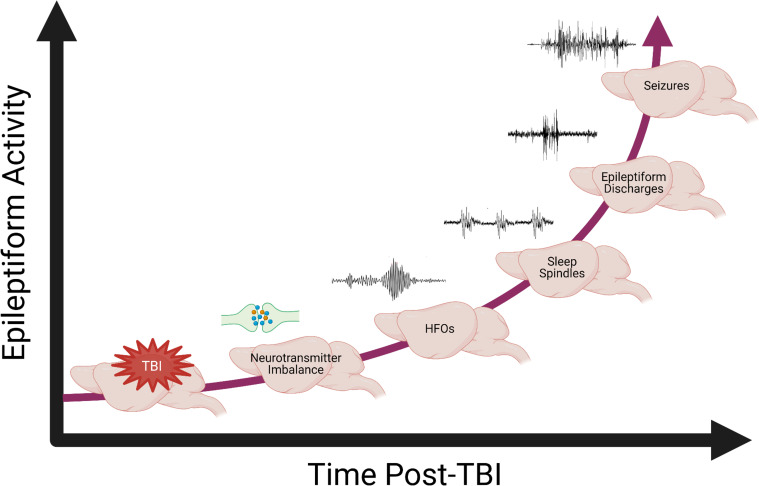Fig. 4.
Evolution of TBI-induced hyperexcitability and seizure activity. Electrographic biomarkers may predict onset of seizures, as hyperactivity in the brain progresses over time to the culmination of spontaneous recurrent seizures. TBI induces a state of heavy inflammation, disrupting both neurotransmitter and metabolic homeostasis. The emergence of these abnormal electrographic activities may reflect different stages of the epileptogenic process postinjury. Pathologic HFOs often precede seizures by weeks, followed by reduced frequency and duration of sleep spindles during the transition between stage 3 and REM sleep. Disruption of normal sleep spindles contributes to several sleep-wake disorders reported by patients with TBI. EEG spiking and discharges represent an advanced hyperactive disturbance that has been described as epileptiform abnormalities in animal brain slices and in vivo at various time-points postinjury. The final stage is the end of latency indicated by the occurrence of spontaneous seizures; however, epileptogenesis can continue to progress even after the first seizure.

